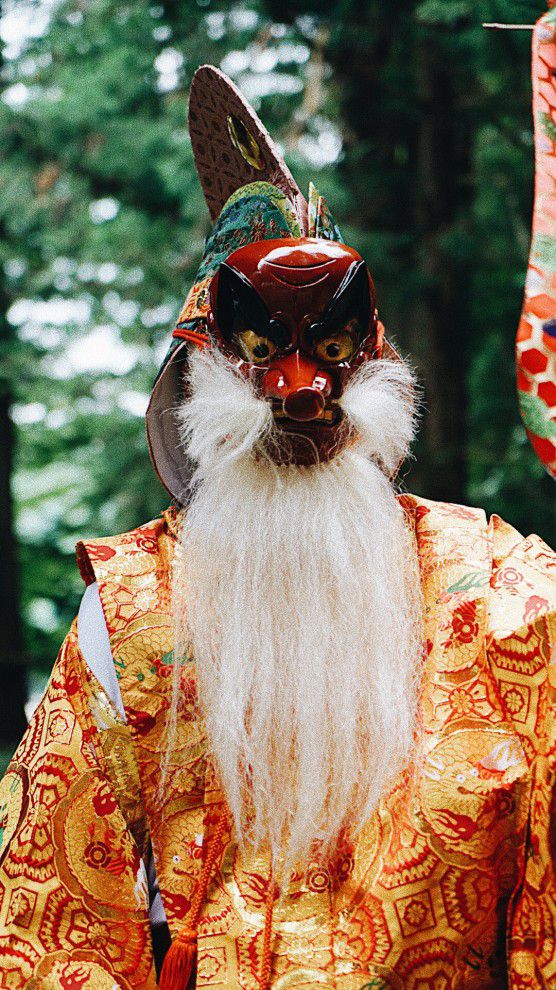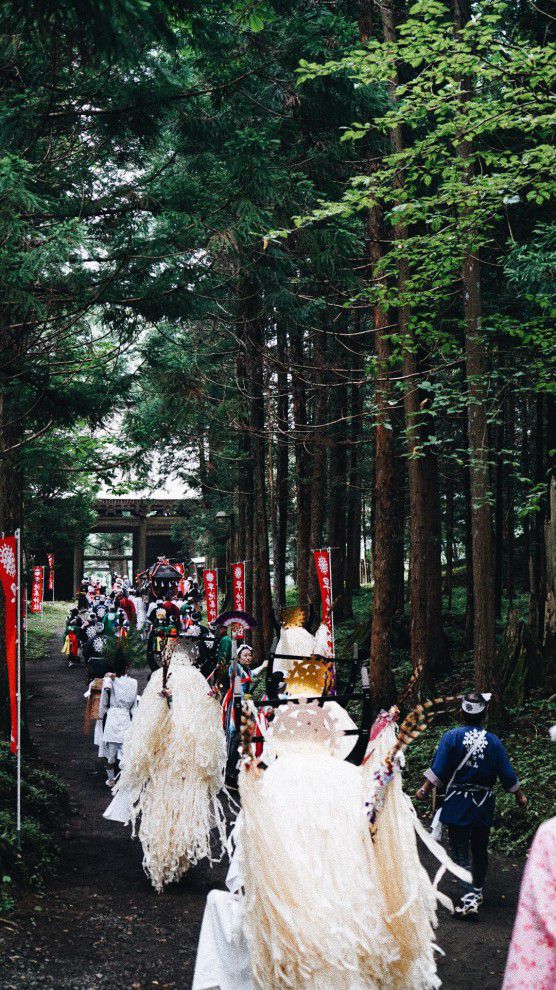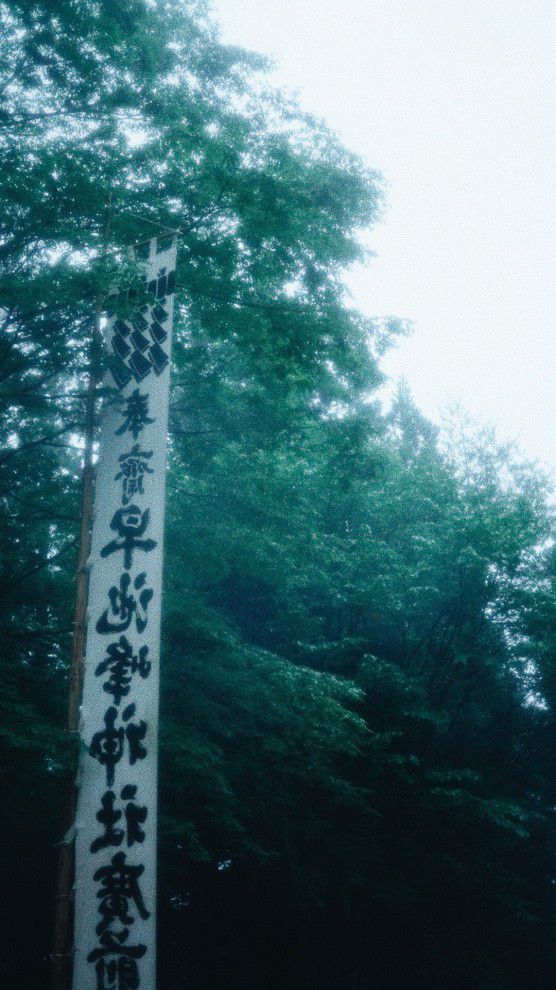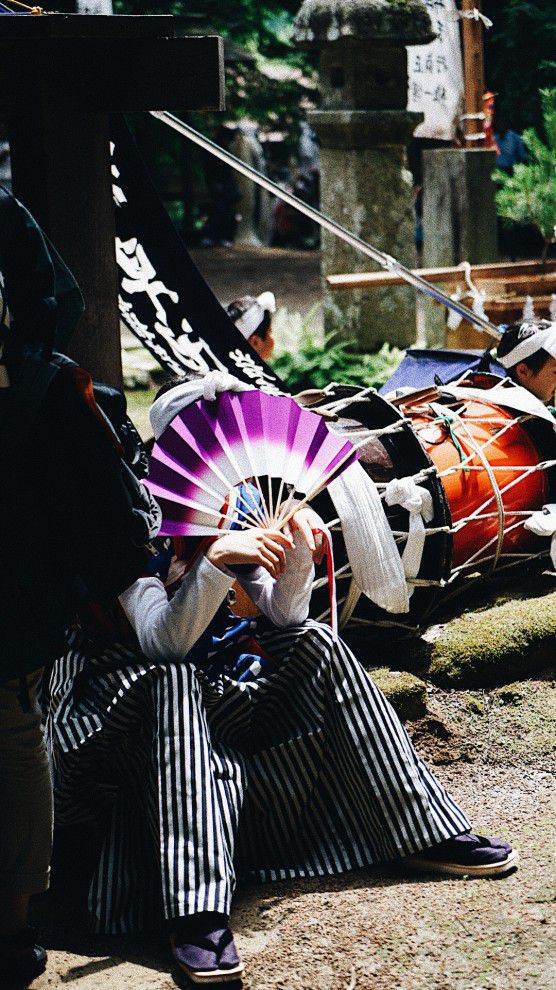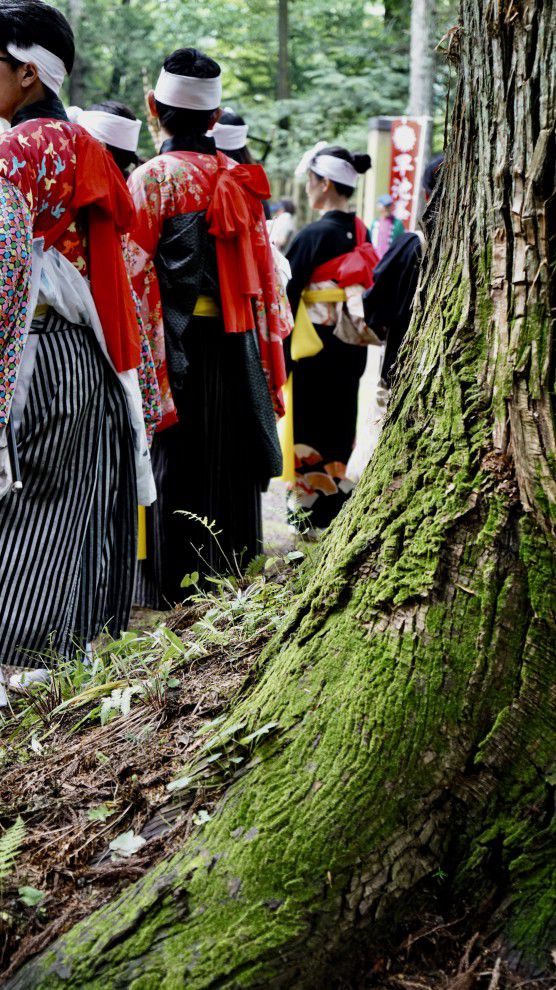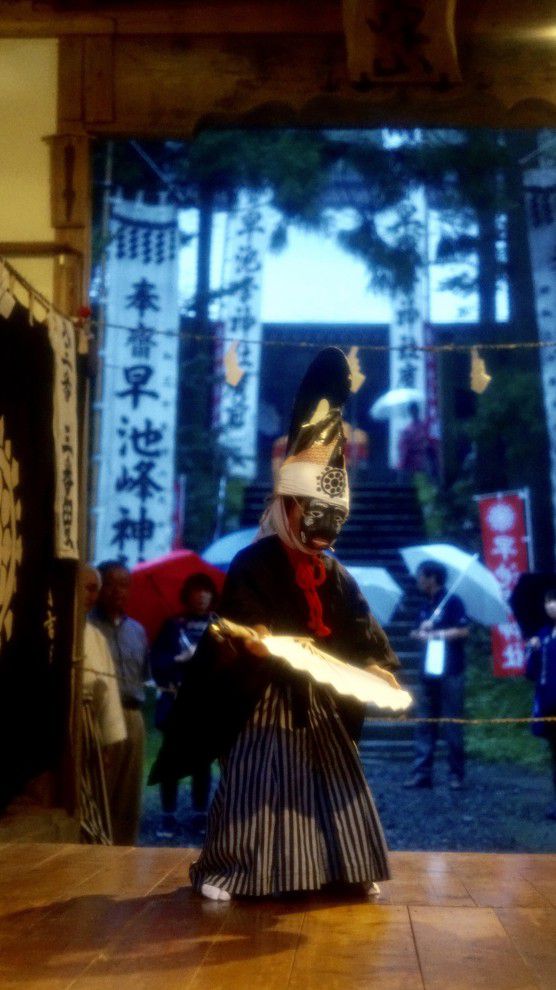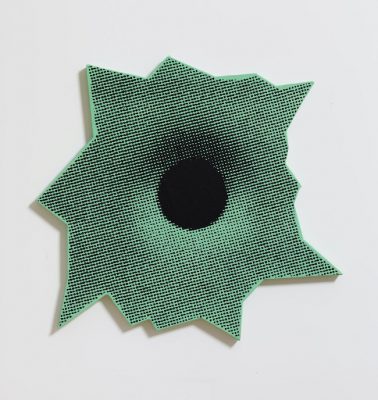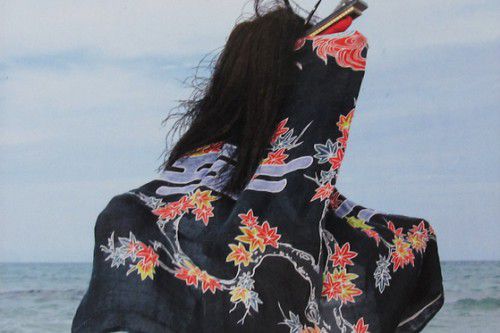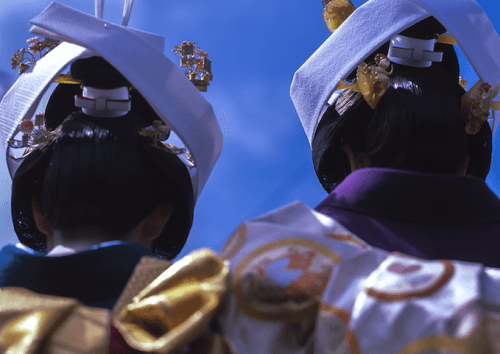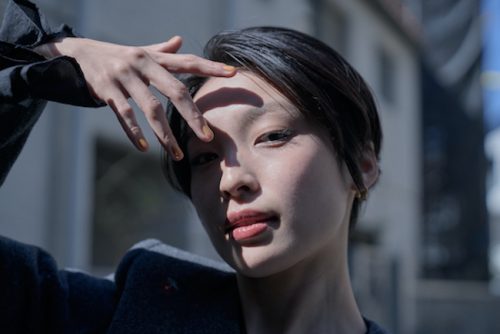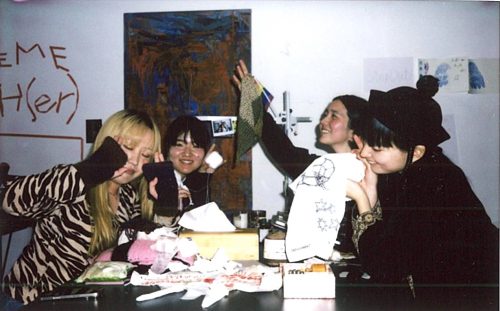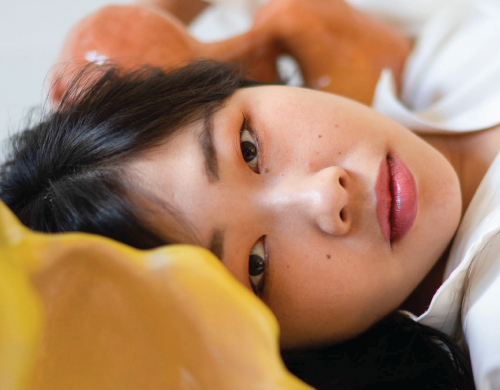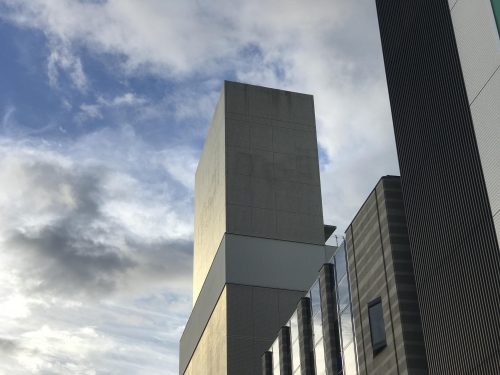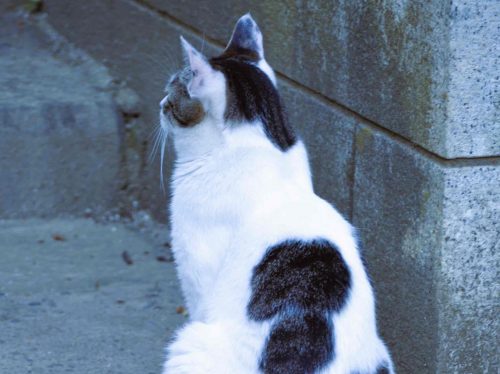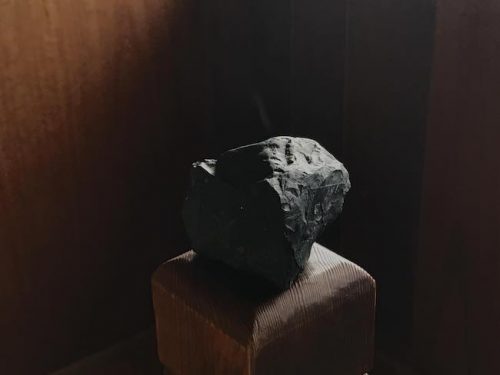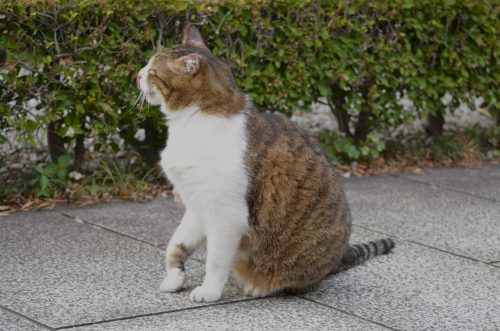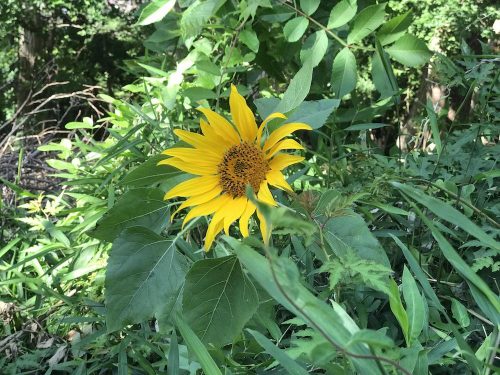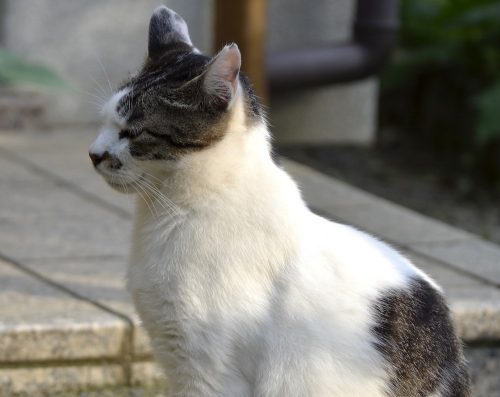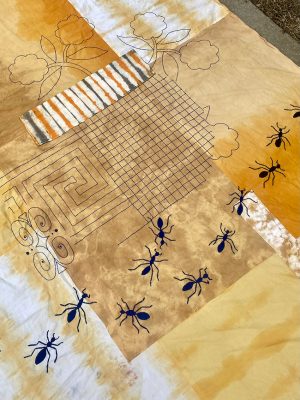早池峰山は岩手県の東側に広がる北上高地の最高峰で、その自然の厳しさは日本国内でも稀な高山植物の宝庫であることからも分かる。早池峰のふもとに住む人々は、山の恵みに感謝し祭神を喜ばせる踊りで祭りの日を彩った。
早池峰神社に奉納される「岳神楽」と大償神社に奉納される「大償神楽」は、早池峰山の神を祀り修験山伏が行った祈祷の舞が神楽となったといわれる。早池峰神楽の伝承の由来は古記録類を消失しており不明だが、岳の早池峰神社に文禄4年(1595年)と記された獅子頭があることや、大償に早池峰山の修験先達をつとめた山陰家から伝えられたという記述がある文献が残されていて、500年以上の伝統をもつ非常に古い神楽であるそうだ。
岳神楽は5拍子を基調とした勇壮で激しい「荒舞」、大償神楽は7拍子を基調としたゆるやかで繊細な「女舞」が特徴。昭和51年5月に国の重要無形民族文化財第1号に指定され、また平成21年9月にはユネスコ無形文化遺産に登録された。
もともとは各家の長男のみに伝えられる門外不出の神楽であったが40年ほど前から集落の小中学校でも子供たちに教えられ、現在では地元民以外にも門戸を開放している。それでもなお、かつての閉ざされた神秘的なものへの畏怖の眼差しがまだ強くあるように感じる。
神楽奉納の日、遠野郷にある早池峰神社の境内には、地元に住む子供から大人までが集う。灯篭に囲まれた境内の中央には神楽の舞台(神楽殿)が用意され、畳に座った人々は夕飯を食べたり杯を傾けたり思い思いに祭りの日を楽しむのだ。舞台と畳との間隔はほとんどなく、神楽の臨場感がよりいっそう感じられる。
演目ごとに舞者や演奏者が変わり、名前を呼び合う様には地続きな共同体の結びつきが見て取れる。伝統芸能が人々の暮らしと密接に寄り添っているのだ。
また、舞者は大人だけではなく五歳の子供が15分以上の独り舞台を見事にこなすのも見所。その舞の力強さと迫力は神が宿ったと言われても納得するほどで、この地で早池峰の神を楽しませるために生まれた神楽のルーツに思いを馳せるに至らせる。
遠野の街を背に宵の闇がすっかり深くなった早池峰の山麓で行われる神楽の奉納は、笛太鼓の音と人々の喧騒によって、そこに暮らしてきた人々の生活と本来のハレの日の存在を呼び起こす。
Located in the highest mountain of Kitakami Highlands which spreads to the east side of Iwate prefecture, Hayachine Mountain is known as a treasure land for rare alpine plants even in Japan. People live by Hayachine Mountain are grateful for the gifts of the nature. The joyous festival is dedicated to the Gods of the mountain.
“Gaku Kagura” in the Hayachine Shrine and “Otsugunai Kagura” in the Otsugunai Shrine are the special ritual dance dedicated to the Gods of Hayachine Mountain. The early records about the origin of Hayachine Kagura are missing, but a record on a lion head from 1595 and some of the preliminary documents from the Otsugunai Mountain all show that the tradition have been lasted for the past 500 years.
The “Gaku Kagura” is an intense dance that illustrates human bravery based on a five-beat tempo, and the “Otsugunai Kagura” is rather a delicate and gentle dance that shows the beauty and grace of women which based on a seven-beat tempo. They were designated as the Japanese Ethnic Cultural Property in May, 1972. In September of 2009, they were officially included to the UNESCO Cultural Heritage.
The performance of Kagura was originally only allowed to be inherited by the eldest son of each family, but about 40 years ago it has began to be opened for kids in elementary school or junior high and even the non-local. The power of the mysterious ritual performance is still felt even now.
On the day of the “Kagura”, people from the local village all gather to the Hayachine Shrine. They gather around the lanterns and sit by the stage on the tatami, passing each other glasses of drinks and enjoying their homemade dinner. There is almost no distance between the stage and the tatami where people sit and watch. The sacred atmosphere is felt by everyone there.
The dancers and instrumental performers change for each different play. The connection between people can be seen when they call each other’s name. The traditional performance is closely related to people’s life there.
Besides the adult performance, there was one 5-year-old boy who performed his solo debut for over fifteen minutes. The power of the dance has well shown that the belief in God is sincere and honest. The true joy of the “Kagura” and the festival lies in the Hayachine Mountain where their roots are.
As the night approaches and the sky gets darker, the sound of the drum and the echoes of the hustles can still be heard. That is the Hare’s Day for people in their natural habitat.
早池峯神社 宵宮祭・例大祭
場所:早池峯神社 岩手県遠野市附馬牛町上附馬牛19地割82
詳しくはこちら 遠野市観光協会公式ページ(http://www.tonojikan.jp/event/0717/)
photography Baihe Sun
text Shiki Sugawara
